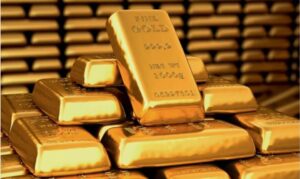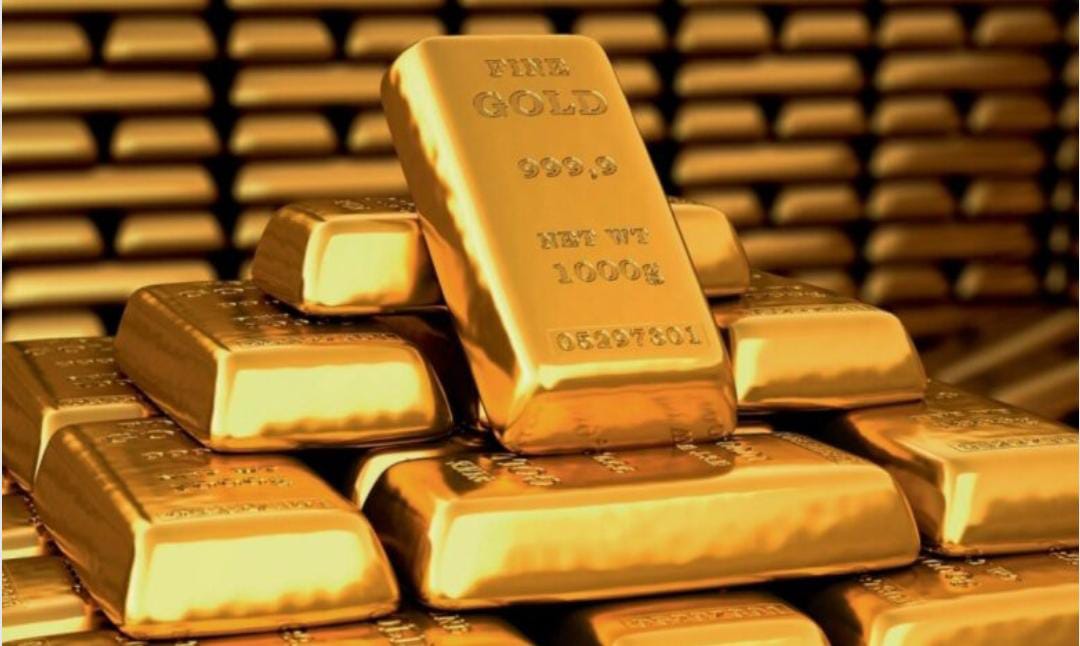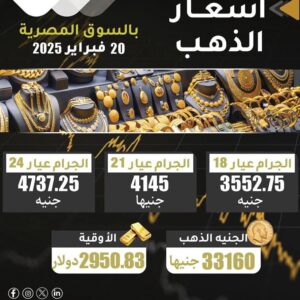Analysts believe that supporting factors such as monetary policies, inflation and central bank demand could push the precious metal to new levels.

Gold started 2025 on a high note, posting its best annual start since 2015, as the yellow metal continued to outperform other investment assets, such as stocks and Bitcoin, benefiting from global economic crises and geopolitical tensions.
According to the latest data, an ounce of gold has hit a record high near $2,900, up 9% since the beginning of the year.
Last year saw a record high in gold purchases, with total global demand reaching 4,974 tonnes, of which central banks alone bought 33.6 million ounces.
Andrew Naylor, Head of Middle East and Public Policy at the World Gold Council, said that the role of central banks in supporting demand for gold is a long-term trend and not just a response to economic and geopolitical crises, noting that this support has had a direct impact on prices.
Naylor added, in an interview with Sky News Arabia, that the impact of central bank purchases depends on the quantities of gold purchased, expecting this trend to continue in the future, especially with economic fluctuations and global uncertainty.
The impact of interest rates is one of the main factors that control the price of gold, as Naylor explains that the monetary policies of central banks, especially with regard to interest rates, directly affect investors’ decisions regarding gold.
He believes that changes in interest rates could lead to sharp movements in the metal's prices, noting that the interest impact could reach 22 - 26% according to current expectations.
As for inflation, the demand for gold as a safe haven has increased, as Naylor says: “There is a consensus that higher inflation increases the attractiveness of gold compared to traditional investments,” and the relationship between inflation and gold prices is not limited to liquid assets only, but extends to broader effects that include global supply and demand.
Among the factors affecting gold prices are the customs duties imposed by former US President Donald Trump, as Naylor believes that these duties may lead to “significant economic inflation, which will increase their impact on gold prices.”
He explained that the customs duties imposed on countries such as Canada will have a direct impact on the prices of precious metals, especially in light of the sharp economic changes witnessed by global markets.
Asian markets are one of the biggest drivers of global gold prices, with Naylor explaining that “70% of price action has been driven by demand in Asia, with India playing an important strategic role in 2024.”
This is due to “the significant economic development of the middle class in India, which has boosted demand for gold, along with economic reforms that have contributed to increased purchases of the precious metal,” according to Naylor.
China has also taken several economic measures that have increased demand, which has helped support global prices.
Gold still maintains its position as one of the most important safe investments, as investment in gold represents about 33% of global demand.
According to the World Gold Council, this percentage has witnessed a significant increase in the past year, in light of economic concerns and political tensions.
Jewellery, particularly diamonds and precious metals, also played an important role in gold demand, with some markets seeing significant changes in purchasing patterns, reflecting the varying effects of global demand.
As economic and geopolitical tensions persist, the big question remains: Will gold continue its record gains? Analysts believe that supporting factors, such as monetary policy, inflation, and central bank demand, could push the yellow metal to new levels.
In light of the global economic uncertainty, it seems that gold will remain the preferred choice for investors seeking safety, especially with the continued volatility in global financial markets.




